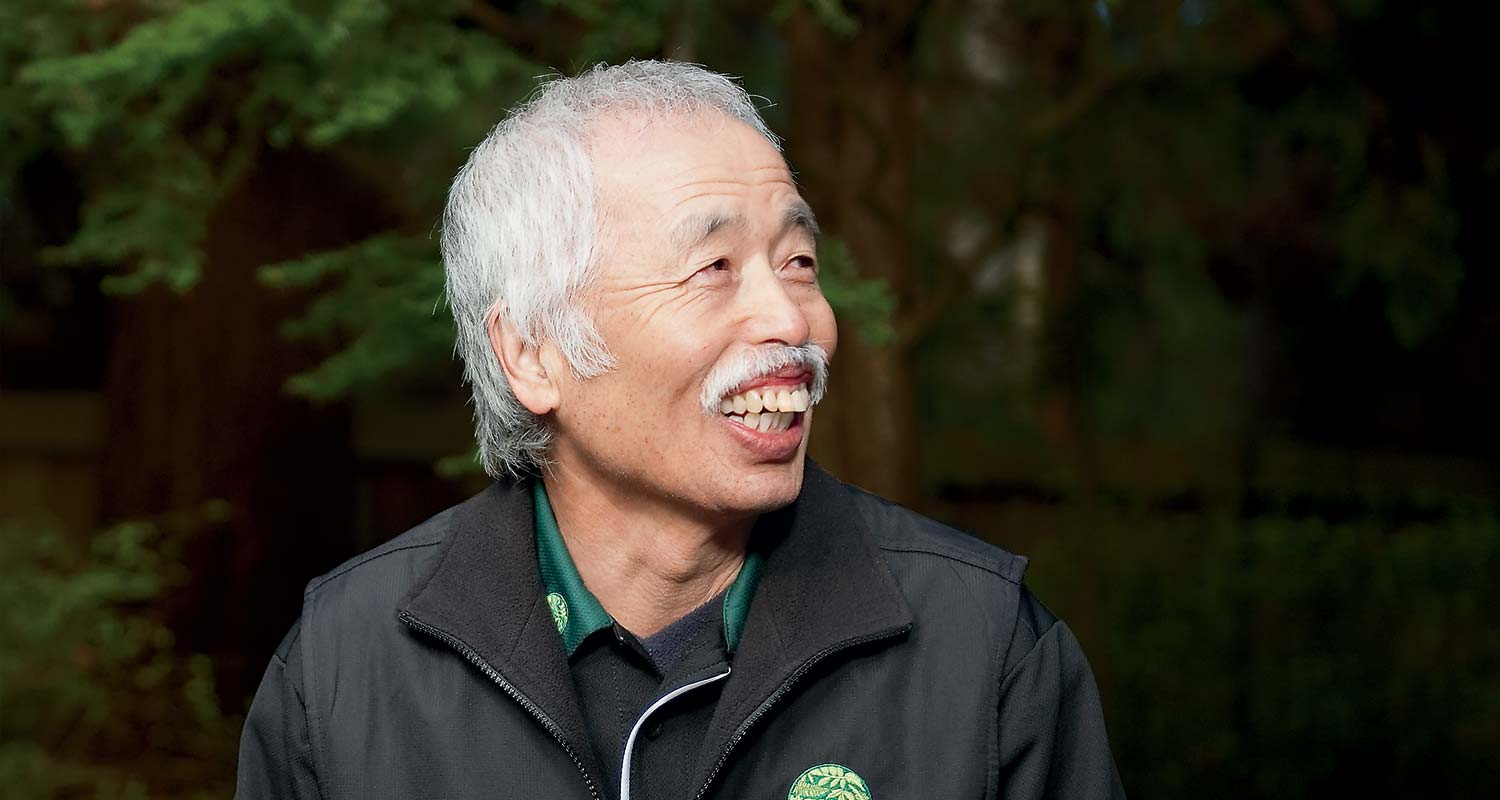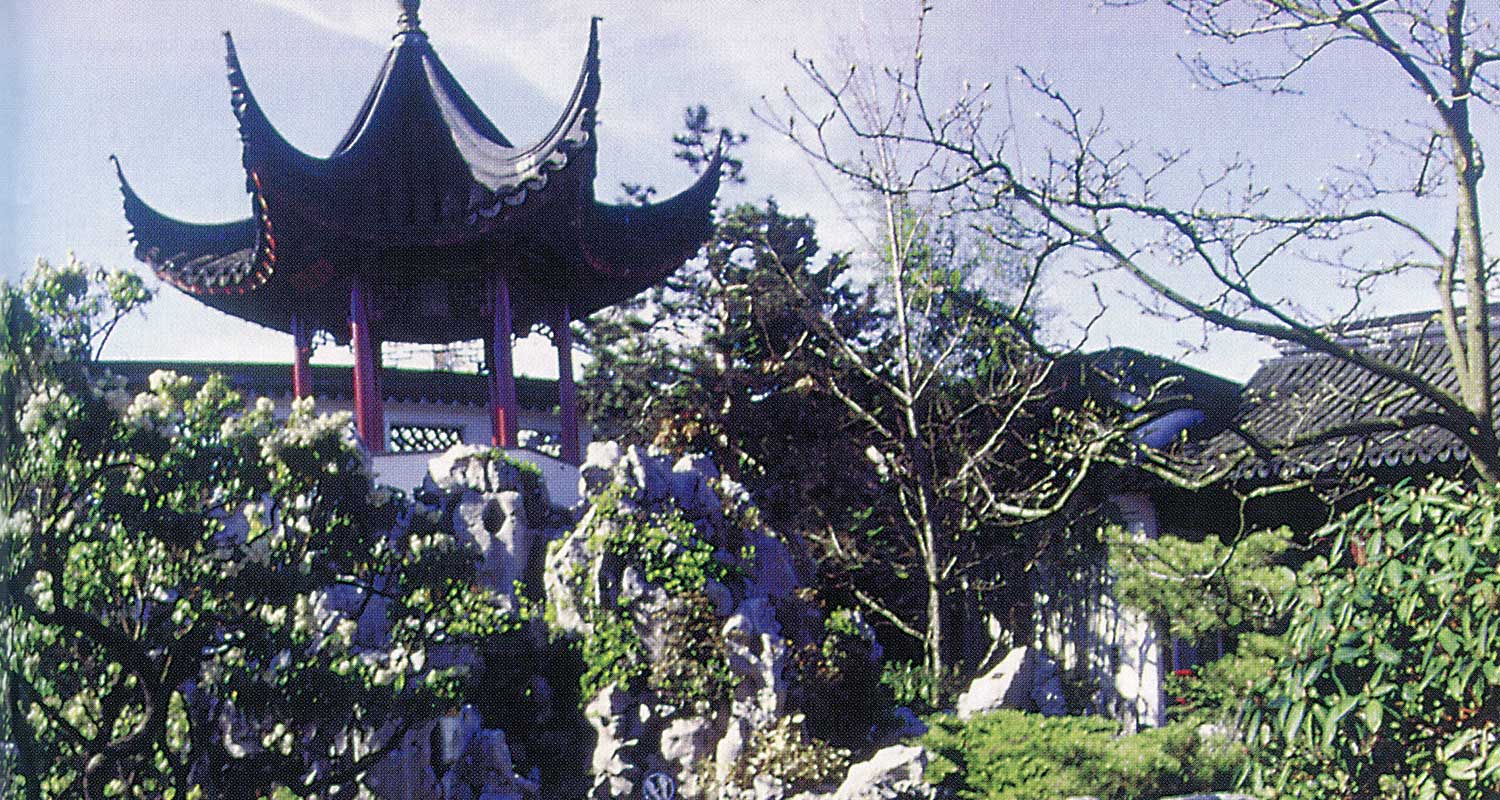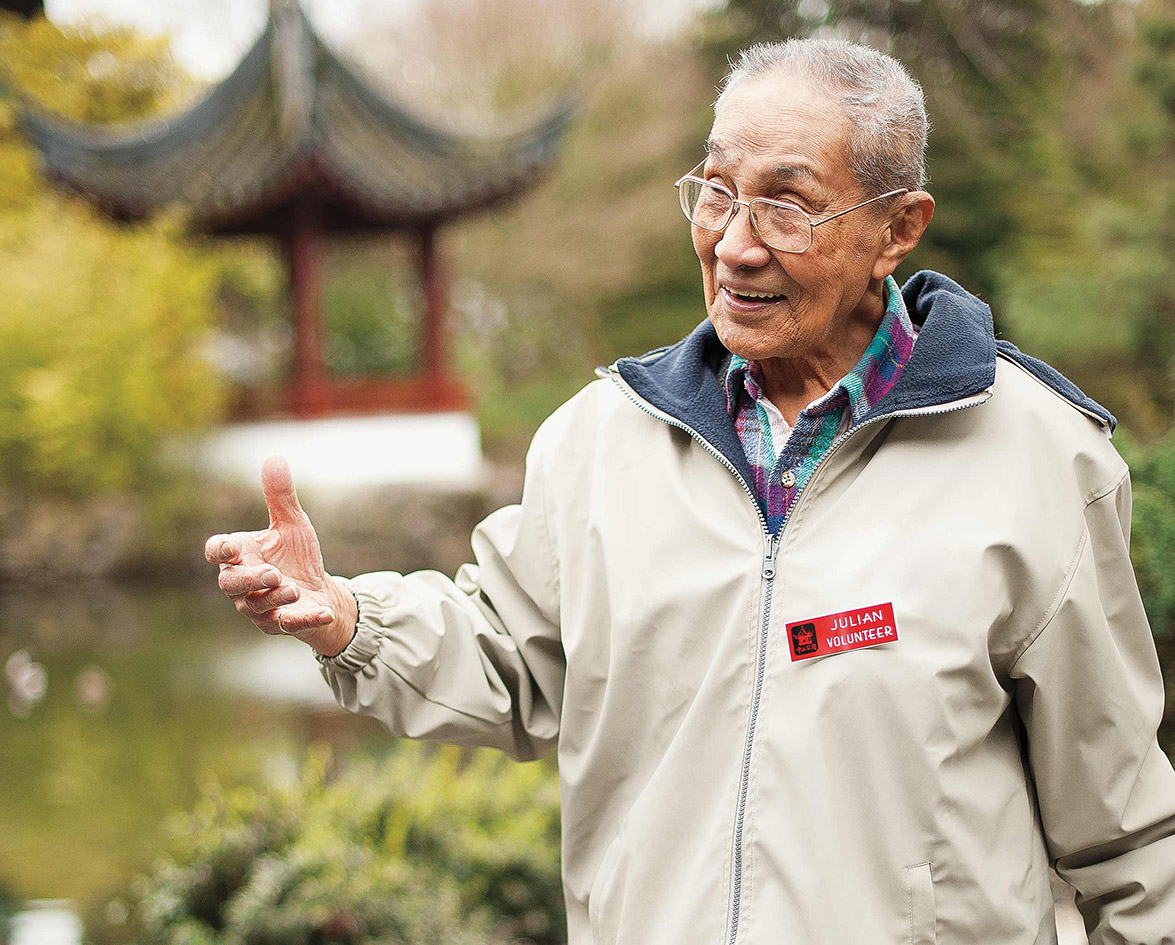Next autumn*, Junji Shinada, horticulturist at the Nitobe Memorial Garden at the University of British Columbia, will be calling it quits. There will be no more planting and pruning trees to idealize Japanese nature, no more clearing out ponds and no more blowing leaves in the garden’s colourful celebrations of fall. After nearly 30 years as Nitobe’s custodian, Shinada is ready to branch out in a new direction. “I’ve been wanting to retire for several years now,” he says, the corner of his mouth trembling from shyness. “It’s time.”
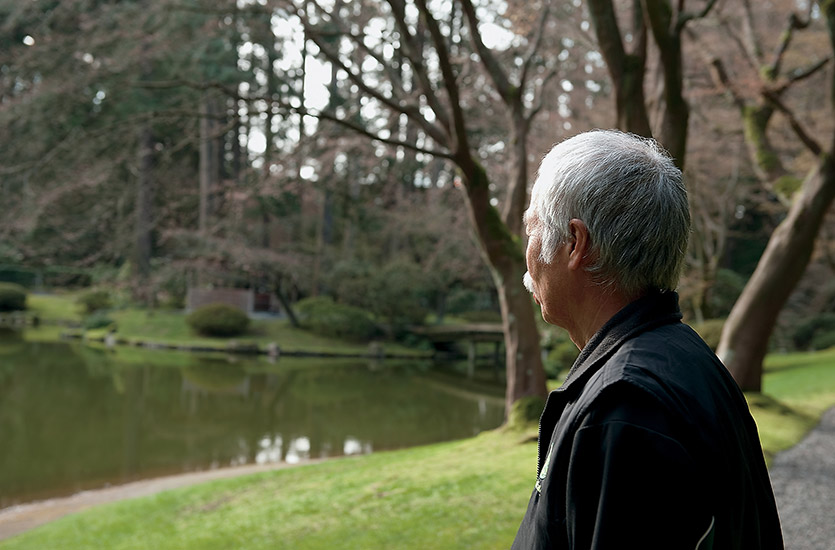
A Man And His Garden
Through his years of fingers-in-the-soil dedication, Shinada has built a deep relationship with Nitobe. Ingrid Hoff, horticultural manager for the UBC Botanical Garden and Centre for Plant Research agrees. “The garden is an extension of Junji, he’s been here so long,” she says. Their characters have become so intertwined that some people compare Shinada and Nitobe to an old married couple. Aside from their placid natures, the most noticeable likeness between them relates to miegakure, the Japanese gardening practice of keeping distant elements only partially visible, motivating visitors to explore.
“At Nitobe, branches are pruned to allow glimpses of something else, be it a lantern, a waterfall, a pagoda, or another tree,” says Hoff. “It’s like a seduction, a veil that makes you want to see what’s on the other side.” Ambling along the garden’s numerous pathways, you immediately see evidence of the technique. From the Seven-Story Pagoda, visitors can spot through the trees the Yatsu-hashi Bridge which provides a vantage over the garden’s vibrant sheets of blue and purple irises in early summer. Standing near the Mother Lantern, you can see Nitobe’s traditional shoji-screen teahouse through the branches of the leaning cherry tree. There are enough visual barriers in the garden to provide mystery, but enough transparency to offer incentive for exploration: the perfect balance to ensure visitors are not robbed of their chance to unwind and reflect.
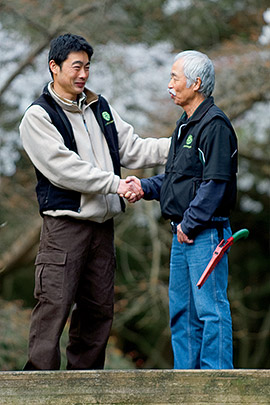
To some of his colleagues, Shinada seems like the human version of a Japanese garden—Nitobe in gumboots. Beneath his self-deprecating manner lies a man of many great accomplishments; shyness and modesty invite curiosity about him. Like Nitobe, Shinada simultaneously hides and reveals. Katie Teed, Nitobe’s marketing and events manager, says that although she has known Shinada professionally for over a year, there are large gaps in what she knows about him. “He’s a fascinating person, and a bit of an enigma,” she says when asked for information about Shinada. “He’s shy, and he really doesn’t reveal too much.” He is so timid that when a Japanese princess came to Nitobe a few years ago and asked to meet the gardener, he ran for cover. “We found him behind a tree and literally had to drag him out,” Hoff says, laughing at the memory. But despite his humbleness and private nature, Shinada allows brief looks into his past.
There are enough visual barriers in the garden to provide mystery, but enough transparency to offer incentive for exploration.
The map of his life is much like the design of Nitobe itself; its many paths symbolize the different choices people make in their lives. Determined to avoid being cloistered in an office like his late father, he chose to enroll in the prestigious Tokyo Metropolitan Horticulture School and to pursue a life outdoors. Rather than reside in Japan, he decided to relocate to Brazil, where he worked at a guava and peach plantation. He has been employed at UBC since the age of 25, having been scooped up by the university soon after transplanting himself onto Canadian soil.
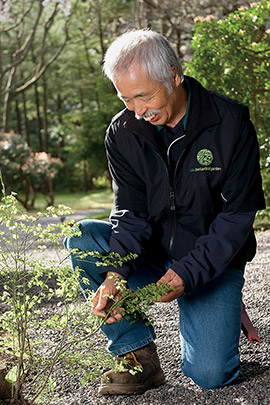
This latest path Shinada has chosen for his life caused some concern for the administration at Nitobe. His expertise in adapting Japanese gardening techniques to local flora and environmental conditions is so specialized that on occasion Hoff was struck with anxiety about finding a replacement. “Some nights I would be sitting up in cold sweat,” she confesses. Fortunately, the months of effort to find a new gardener have finally paid off. Ryo Sugiyama, a landscape architect from the same university as Nitobe’s designer, Kannosuke Mori, has been hired for the position.
More Than Just A Garden
Walking Nitobe’s stone paths among the Japanese maples and azaleas, past the Remembering Lantern and over the Eleven-Plank Bridge, you can contemplate past and future choices. For Shinada though, the decision to retire has been made; only when pressed will he talk about the things he will miss about the garden. “The light in the morning. The change of light. And being alone with no noise,” he says. These are the times that he feels the strong joucho, or deep emotion, that brings him the satisfaction of a job well done.
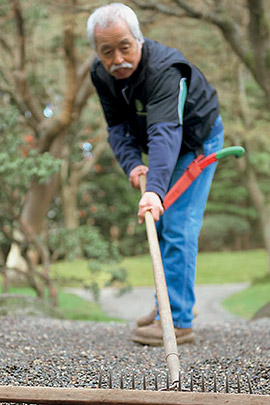
Part gardener, part philosopher, Shinada believes that many Japanese gardens outside of Japan are missing an ingredient that evokes this profound feeling. “There are many gardens that aren’t truly Japanese,” he says of the many attempts made to recreate one of Japan’s most appreciated art forms on North American soil. “If you don’t feel joucho, it’s not a real Japanese garden.” He admits that when he first saw the university’s two-and-a-half-acre dedication to Dr. Inazo Nitobe, a Japanese scholar and diplomat whose goal was to be a cultural bridge between Japan and the West, he didn’t feel joucho either. He has spent much of his adult life cultivating Nitobe to encourage an emotional connection with the many visitors that come to the garden each year from all corners of the globe.
Shinada has been so successful at invoking joucho that Emperor Akihito of Japan let out a heartfelt “I am in Japan” as he and his wife strolled Nitobe’s paths in the summer of 2009. “Joucho is something every Japanese understands,” Shinada says. “It comes from the way a garden is planned.” Mori may have had just that in mind when he was commissioned by UBC in 1959 and selected by the government of Japan to design Nitobe. Mori hoped his creation would be both an oasis in which people could escape the hubbub of modern life to experience tranquility and a bridge to cultural understanding.
With Shinada’s retirement approaching, Hoff is keeping her fingers crossed that Nitobe’s caregiver will remain within a stone’s throw, should he be needed. Shinada is open to the idea. For him, retirement doesn’t mean Caribbean cruises and golfing safaris. He is determined that through teaching and consulting, his knowledge can continue to benefit Nitobe and the Japanese gardening community. He is so committed that he postponed his retirement twice so that the garden administration could find someone to replace him.
Every day offers him small treasures that will make pulling up his roots at Nitobe difficult.
At present, Shinada is counting the months until his watch over this bridge between cultures is finished. He admits that after so many years in the garden, much of his work is now routine. There is pruning to be done, trees to be shaped, and intrusive flora to be managed while maintaining the garden’s sense of separation from the outside world. Still, every day offers him small treasures that will make pulling up his roots at Nitobe difficult: the soft light through the leaves, the morning chorus of birds, the flowering irises and cherry blossoms. These inspire the joucho that he hopes others will strive for when creating their own Japanese gardens.
*Junji Shinada has since retired after this article was written in 2010.





